For me, mid-century modern Czech glass has it all – visual appeal, superlative quality, and superb stories laden with social, economic and political background. It attracts my eye, satisfies my hands, and feeds my mind. And, to top it all off, much of it is currently affordable, with most prices ranging from £20 to around £1,000, with the widest selection being priced from £80 to £500.
When I first began buying Czech glass in the mid-2000s, I didn’t know that’s what it was. Most glass is unmarked and I couldn’t find many of these amazing designs in reference books. Nevertheless, I felt it was good stuff that must have a good story, and it turned out I wasn’t the only one. My friend, the collector Graham Cooley, had been hunting it down on a larger budget and for longer than me. In 2006, after much discussion, we decided to do something about it and, two years later, Graham mounted an exhibition of his private collection with an accompanying book written by me.
If you haven’t heard of ‘Czech glass’ from this period, you will likely know of Bohemian glass. The geographical area known as Bohemia was largely covered by Czechoslovakia (today’s Czech Republic) and has been renowned for production of fine quality glass since the 17th century. During the 18th and 19th centuries, the area and term became celebrated across the continent and beyond for the superb clarity and vibrancy of its glass. It was typically richly cut and often cased or enamelled with designs that sparkled as they reflected and refracted the light. Specialised glass schools were founded to feed the booming industry with both makers and designers.
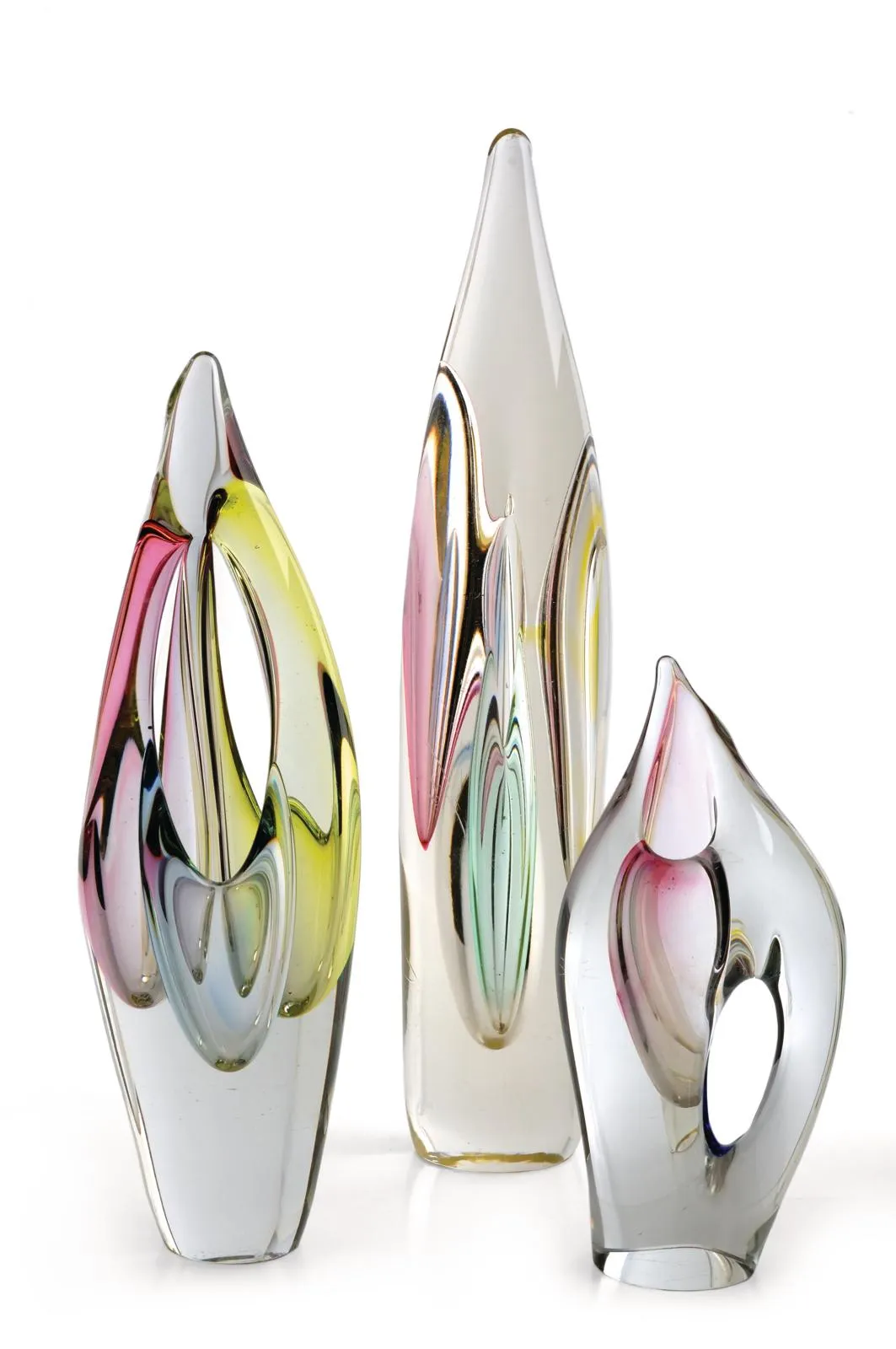
Bohemian glass continued to define period styles in glass during the early 20th century, from the art nouveau designs of Loetz and Kralik to the dramatically coloured cased and cut angular art deco designs of Karel Palda and others. Then came the Second World War and the Iron Curtain, and Europe was divided by politics rather than war.
Somehow, this centuries-old, worldclass industry was then largely forgotten. The blame must lie with the Communist regime, which, although successful in continuing to develop the industry, closed certain avenues. Designers were largely unable to leave the country, and what was allowed in and out was strictly controlled.
You might also like the history of mercury glass
At this time, Bohemian glass was mostly unmarked, and any that was marked usually only had a generic ‘Bohemia Glass’ label. Although books were produced, they were in limited print runs, or commemorated exhibitions. The state’s monopoly distribution agency, Sklo Export, did produce a magazine, but it was aimed at and limited to the Western retail trade. As a result, widespread knowledge and understanding of Bohemian glass’s new ‘makeover’ was scant.
This meant that glass designs produced in other, easier-to-research and understand countries such as Italy, Scandinavia and the UK took precedence, and most of the great many Czech designs on the secondary market were often misattributed to these first two countries. From the late 1980s onwards, after the fall of the Iron Curtain, more pieces were revealed, and research and reappraisal slowly got off the ground. However, it only really took hold in the mid-2000s.
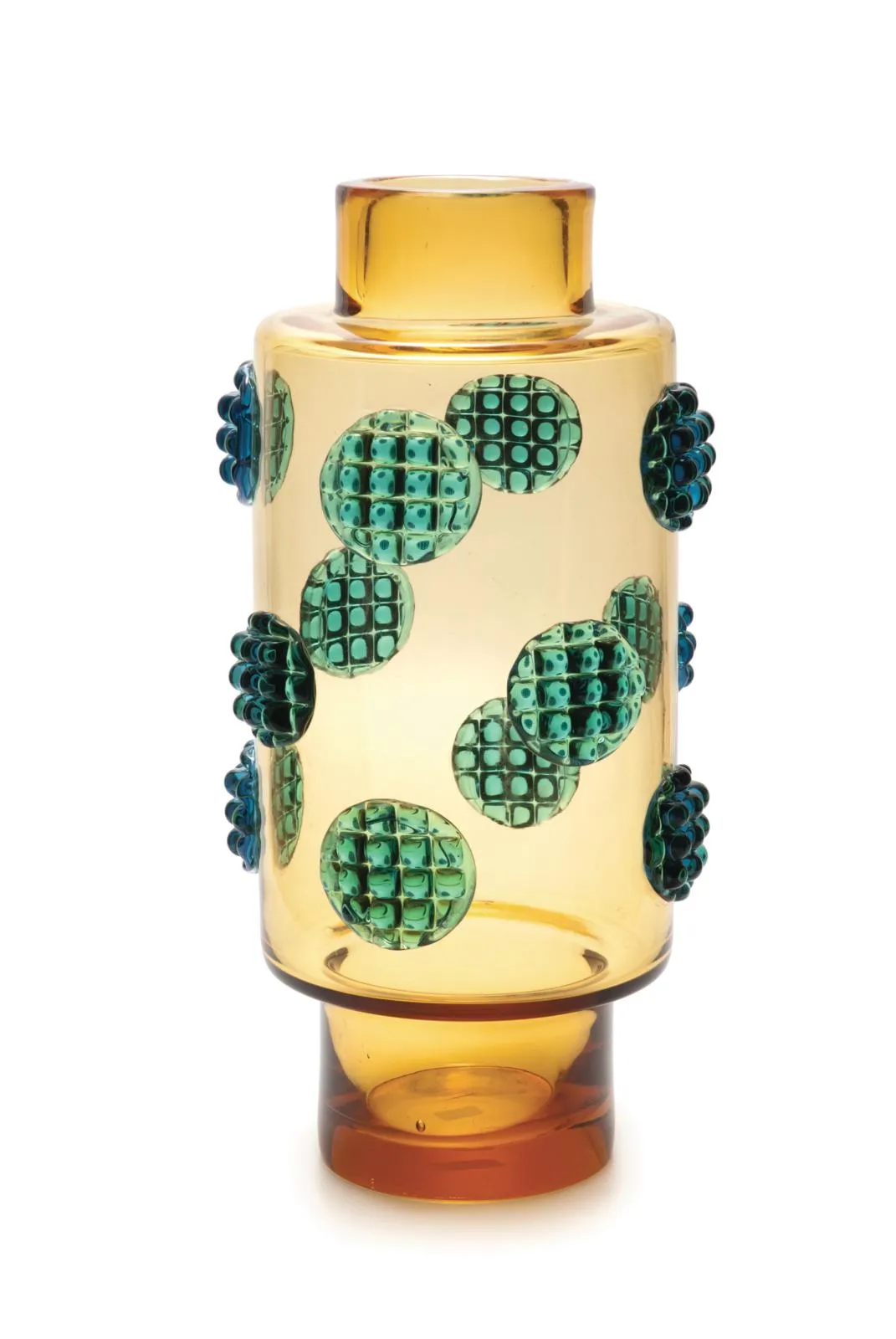
Although much of the glass produced was available in Czechoslovakia and across the Communist Bloc, it was perceived as expensive, and the vast majority was exported to the West. The Communist regime understood what they had ‘inherited’ and saw glass as a lucrative commodity that would both generate industry and bring in revenue in foreign currencies. Thus, perhaps surprisingly, the regime poured money into the industry, rebuilding and reorganising factories, and developing and modernising the infrastructure from top to bottom.
Glass didn’t just bring in money, as the avant garde nature of the designs coupled with the high quality honed across centuries also brought status. To achieve this, the regime took part in glass exhibitions across the world, and large displays were included in the progressively modern Czech pavilions at World Expos, most notably those in Brussels in 1958 and Montréal in 1967. Designs were also submitted to less public, but still highly prestigious, design fairs such as the Milan Triennale in Italy. Numerous medals were won.
You might also like collecting antique glass paperweights
Although the Iron Curtain curtailed communication considerably, designers didn’t work in total isolation and paid close consideration to commercial concerns. Designs that would sell internationally were favoured by the regime’s approval boards, so hot-selling designs produced on the Italian islands of Murano and in Scandinavia from the 1950s to 1970s were strong inspirations in terms of colours, techniques and forms.
However, some more avant garde designs did sneak through, partly due to a fundamental lack of understanding by the Communists. Western abstract, modern art was deemed decadent and subversive, and so was banned in favour of the propaganda-like socialist realist movement.
On the other hand, the Communists didn’t see glass as a medium that could convey a social or political message, so artists and designers were free to experiment more widely in glass than they were in other media such as paint and canvas. As a result, many artists moved into glass design, bolstering the boom in, and breadth of, creativity in glass at the time.
Five key pieces
Diving deep
A 1960s–70s Exbor ‘Scalare’ (‘Angelfish’) sculpture (23cm high), designed by Stanislav Honzik and Josef Rozinek from 1958 – £500–£700
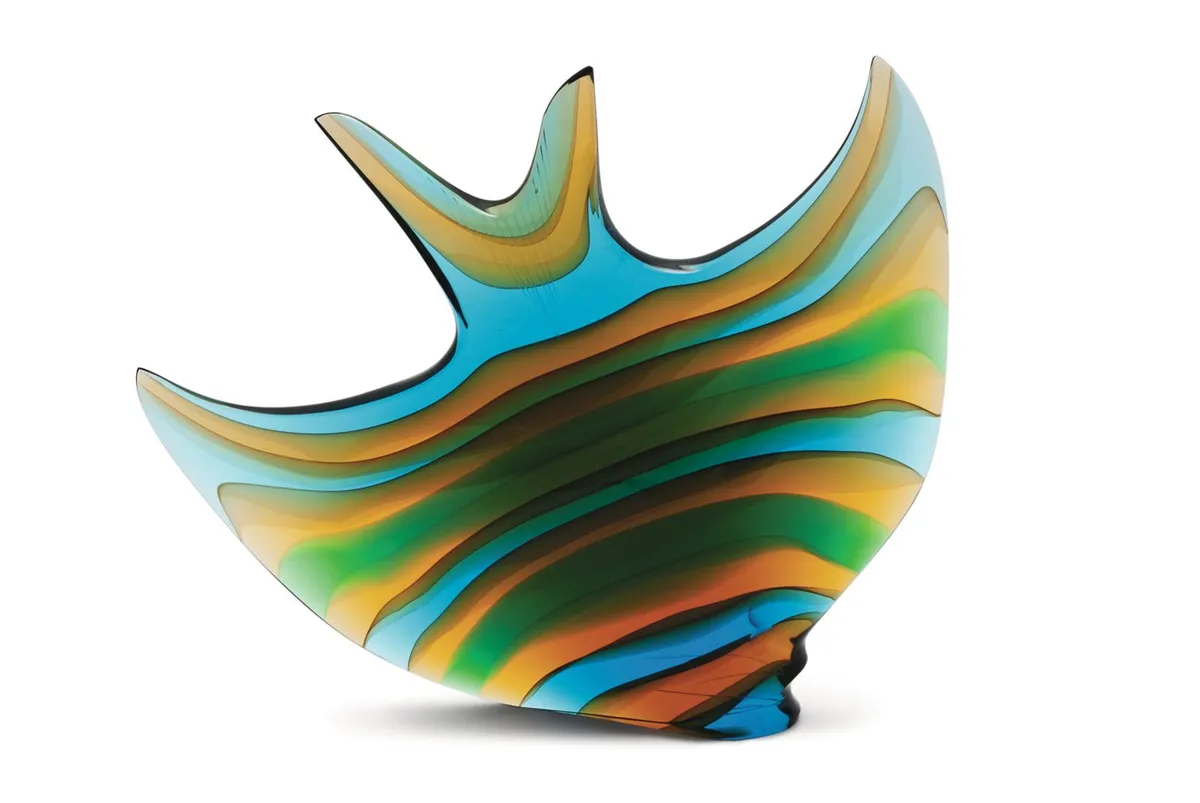
Animal sculptures in glass are eternally popular, but they vary from kitsch to truly deserving the term ‘sculpture’. The range of fish designed by glassmaker and keen angler Rozinek and glasscutter Honzik fall into the latter category. Carefully cased in vibrant colours, then cut and polished to gemstone-like perfection, they also capture the movement of real fish, with details such as a slightly twisted body or fin. Forms are reduced to their essentials and are starkly modern. This superb, large example was part of a range of different fish in various sizes that proved popular across the world from the 1960s–90s.
Cutting edge
A 1960s–70s Podebrady cut lead crystal tapering cylinder vase (35cm high), designed and cut by Vladimír Žahour – £800–£1,200
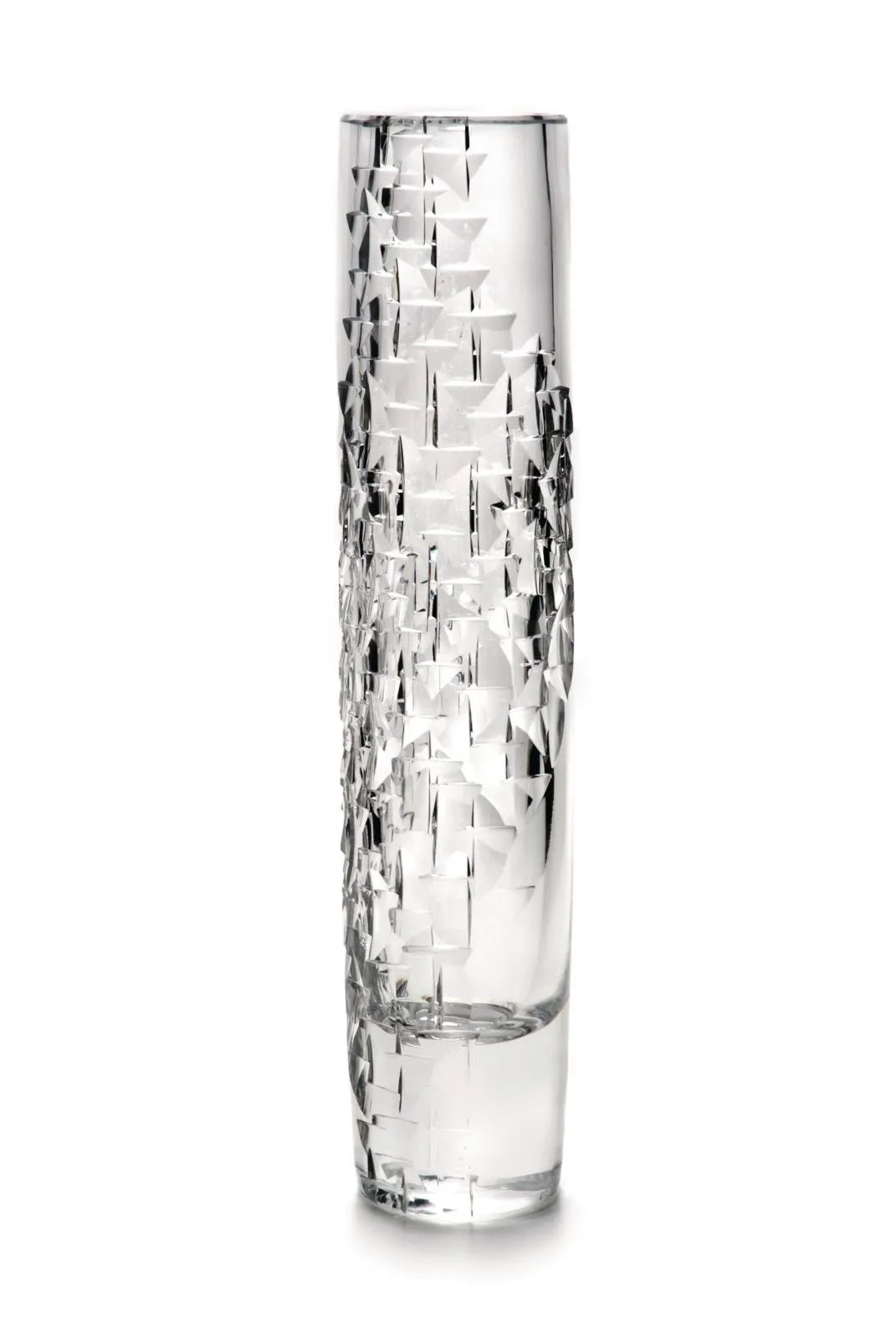
T he 1950s–60s saw a major modernisation of cut designs – the area Bohemian glass was traditionally known for. Rather than it being used to create traditional mitre and star patterns, or figurative or commemorative designs – as in the 18th and 19th centuries – the cut itself became the sole focus. As such, the reflective properties of the cut accentuated the clarity and quality of the crystal itself and were used in abstract, non-representational designs to highlight this. Vladimír Žahour’s 1960s unique, glittering designs were lauded as masterpieces in their day, both for their modernity and time and skill required.
Hot-worked highs
A 1960s Škrdlovice blue, green and red ‘Red Core’ vase (30.5cm high), pattern number 5988, designed by Jan Beránek in 1959 – £200–£350
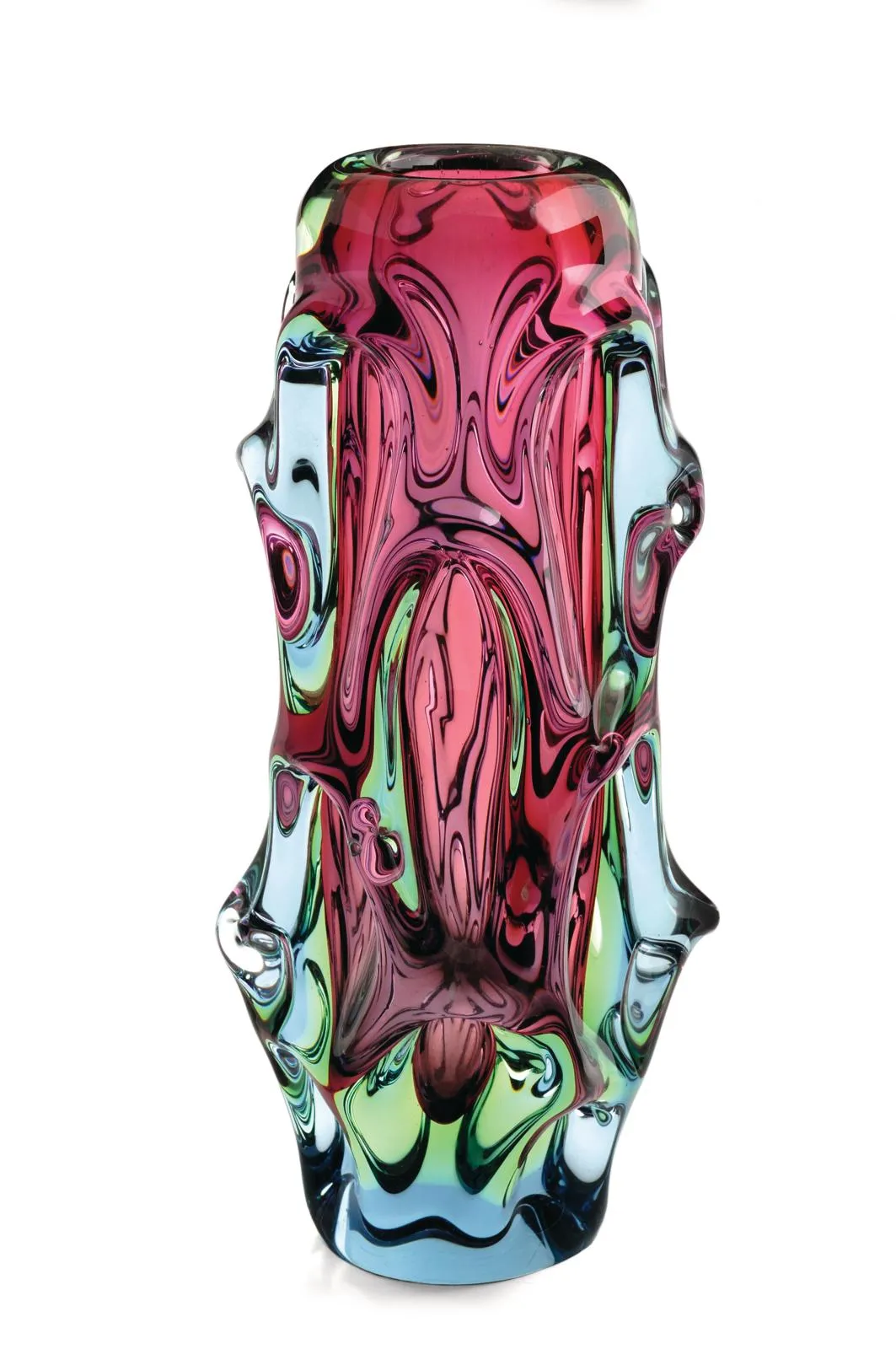
Škrdlovice, founded in 1942 by Beránek’s father Emanuel, was a hotbed of experimentation. Protected from the regime’s reorganisation by the cardcarrying Communist designer Pavel Hlava, it blossomed from the 1960s–80s, employing nearly all of the country’s most renowned designers to produce a myriad of designs in often strictly limited numbers. Beránek worked closely with his father and this is his most celebrated design – it is typical of the chunky, very ‘glassy’ designs produced. The hot-worked lobes and combination of colours create a fantastic optical effect. Once seen frequently in the marketplace, supplies have nearly dried up and this hallmark design is increasingly hard to find. Watch this factory and its production closely, as it still has a long way to rise.
Magic monoliths
A 1960s–70s Exbor cased and cut ‘Monolith’ vase object (34cm high), designed by Pavel Hlava from 1957, with acid etched circular Exbor mark to base – £700–£1,000

As the ‘vase object’ title suggests, although these could clearly function as a vase, the addition of a flower to the tiny aperture would ruin the effect – these are more sculptural than functional. Hlava won awards for this series of monumental designs that are based on the cased ‘sommerso’ designs from Murano. They are made distinctly Czech with the addition of bold cut facets, which cause reflections as one moves around the piece. Made into the 1990s and beyond, not so desirable or valuable later examples tend to be smaller in size, and are executed in less comfortable, brasher, and brighter colour combinations. Every serious glass collection should have one of these hallmark designs.
Enamelled energy
A 1960s Exbor Studios lidded jar (17.5cm high), designed by Vratislav Šotola in 1966, with hand-enamelled panel surrounded by acid matted exterior – £700–£1,000
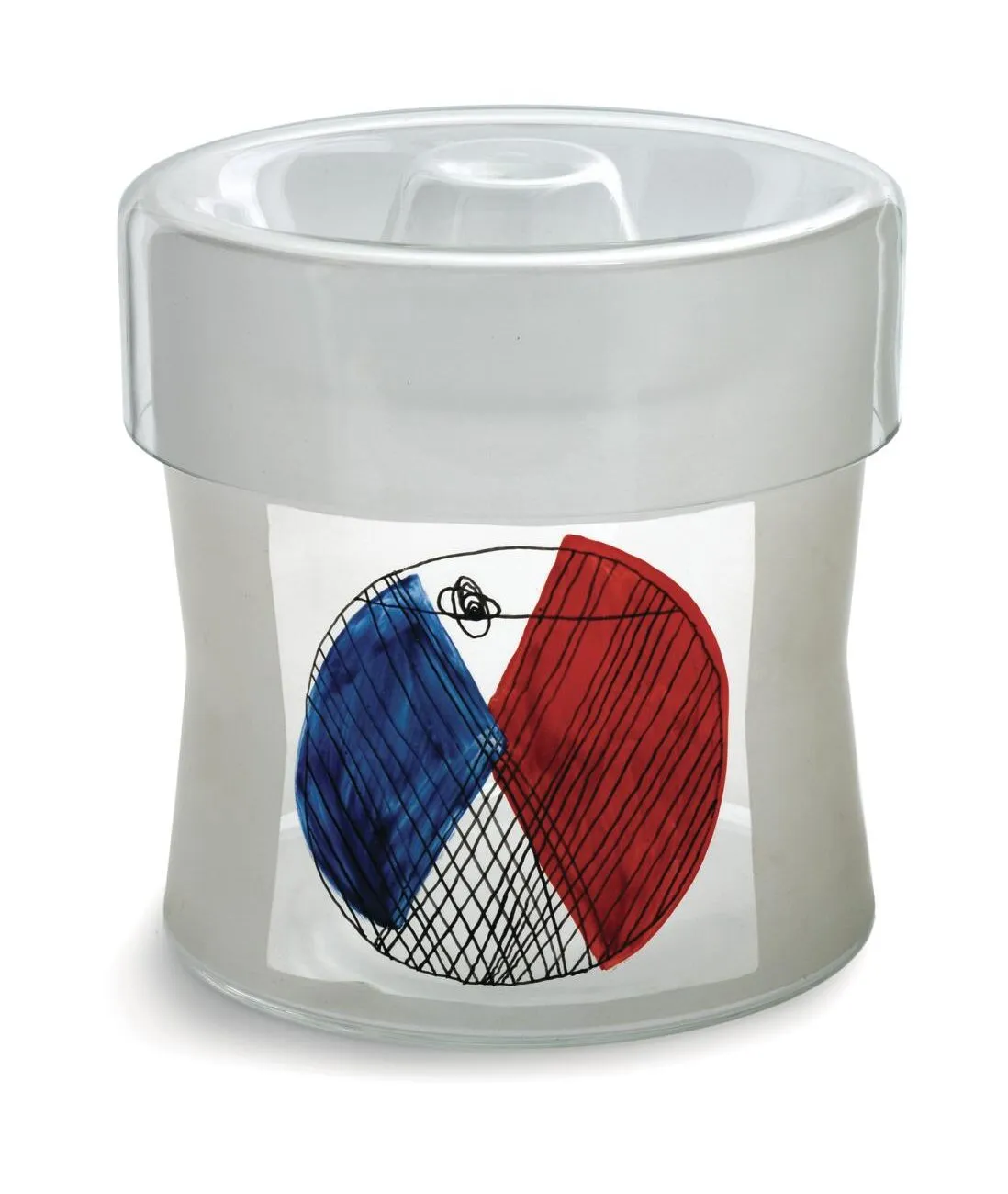
Painted and enamelled pieces were updated after the war in the same way as cut and engraved glass was (see ‘Cutting edge’ on facing page). Most of the pieces produced were effectively ‘modern art’ on glass, and were unique pieces produced specially for exhibitions, or made in tiny production runs. Although such abstract art was banned by the Communist regime, artists were free to express themselves on glass. Against these ‘haute couture’ pieces, the ‘high street’ equivalents were vases, decanters or jugs with sets of drinking glasses. These were gilded or enamelled with banded, stylised floral or geometric patterns, and usually fetch £10–£60.